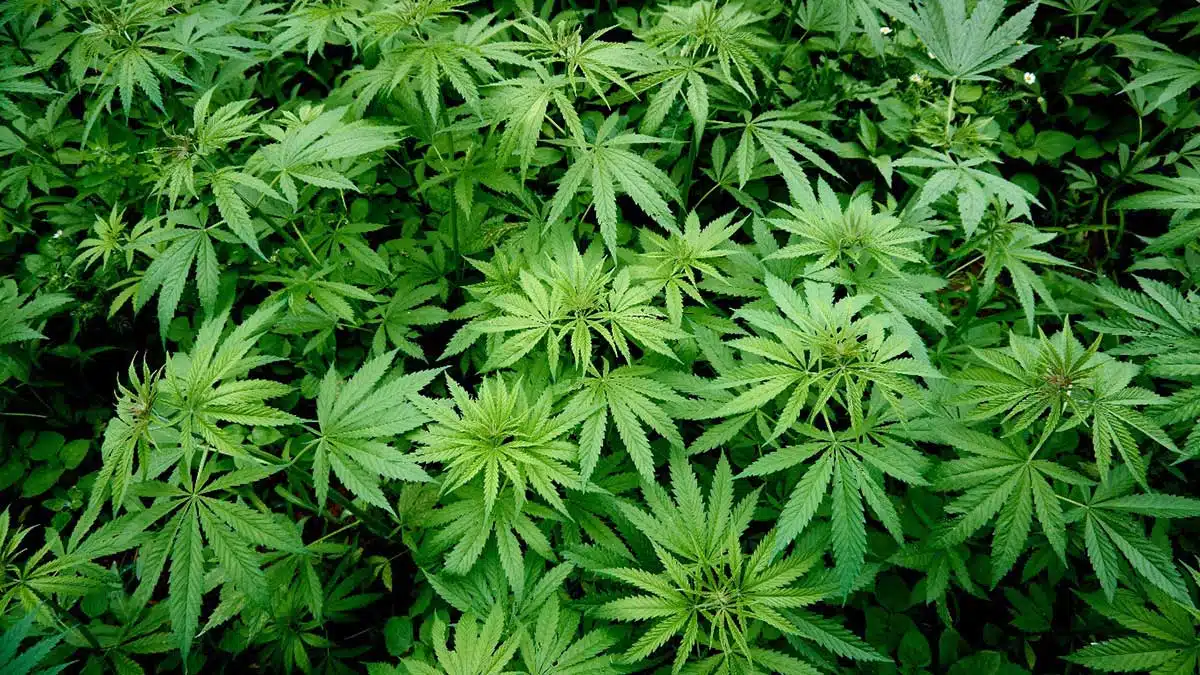Hemp
Cannabis sativa ssp.
General info
Hemp is one of the most ancient, domesticated crops in the world, originating from temperate Asia but now grown worldwide. It is an annual flowering forb with multiple varieties grown for fibre or seed, occasionally for both. Fibre varieties have the highest bulk biomass yield, reaching 2-3 m in height. Hybrid monoecious varieties have been developed, improving both ease of reproduction and uniformity of the plants for agricultural plantation purposes. Industrial hemp is defined as having less than 0.2% Tetrahydrocannabinol (THC) but can contain high levels of cannabidiol (CBD), an active ingredient that does not produce a “high”.
It is among the fastest growing plants on earth alongside bamboo. Whilst certain strains were bred for their high THC content (1–20%) and hallucinogenic properties, other varieties were bred for their excellent fibre potential. Alongside the well-known and well-studied medicinal benefits (reported health benefits of CBD compounds include anti-inflammatory and antioxidant properties), hemp seed has a high oil and protein content, whilst shiv and bast produce fibre, with numerous applications from pulp/papermaking to textiles and bio composites, insulation and building products.
Defra have identified hemp as suitable for diversifying UK agriculture, acknowledging environmental benefits include deep rooting, soil structure improvement, weed suppression, and contribution to net zero through locking up of hemp products in the building trade.
Cultivation and agronomy
Hemp is established by seed using conventional machinery suitable for planting. In the UK, this rapidly growing spring crop produces 7-15 tonnes of biomass per hectare, requiring only moderate nitrogen. Hemp has a water requirement of 250–700 mm during the growing period, and tolerates high temperatures with optimal growth occurring between 13-22°C. It is not very tolerant of water logging in the lower root zones. Hemp has a variety of self-protective properties, making it resistant to diseases and insect damage, reducing biocide requirements.
Harvesting depends on the purpose of the crop (fibre or seed). When grown for seed production, harvesting is conducted when the seeds are fully matured, and leaves are beginning to dry and turn yellow. For fibre production, harvesting is conducted when the plants reach their maximum height, and the lower leaves begin to yellow. Conventional harvesting equipment such as combine harvesters, sickle-bar mowers, handheld pruning shears may be used, depending on the scale of operation. Post-harvest separation and processing are also required to achieve the highest economic gain from the crop.
A home office licence is required to produce hemp fibre or obtain seeds for oils, covering both cultivation and possession of industrial hemp in the UK. Growers must also ensure they source seeds from EU/UK approved seed types with a THC content not exceeding 0.2%. Extraction of CBD compounds from field crops is not currently allowed. Relaxation of licencing restrictions could provide UK farmers with the opportunity of increasing the value of their crops.
Return to crops overview
Relevant research
Parvez, A. M., Lewis, J. D., & Afzal, M. T. (2021). Potential of industrial hemp (Cannabis sativa L.) for bioenergy production in Canada: Status, challenges and outlook. Renewable and Sustainable Energy Reviews, 141, 110784.
Fike, J. (2016). Industrial hemp: renewed opportunities for an ancient crop. Critical Reviews in Plant Sciences, 35(5-6), 406-424.
Das, L., Liu, E., Saeed, A., Williams, D. W., Hu, H., Li, C., … & Shi, J. (2017). Industrial hemp as a potential bioenergy crop in comparison with kenaf, switchgrass and biomass sorghum. Bioresource technology, 244, 641-649.
Additional Resources from Biomass Connect

Read our Hemp as a Biomass Crop Technical Article


